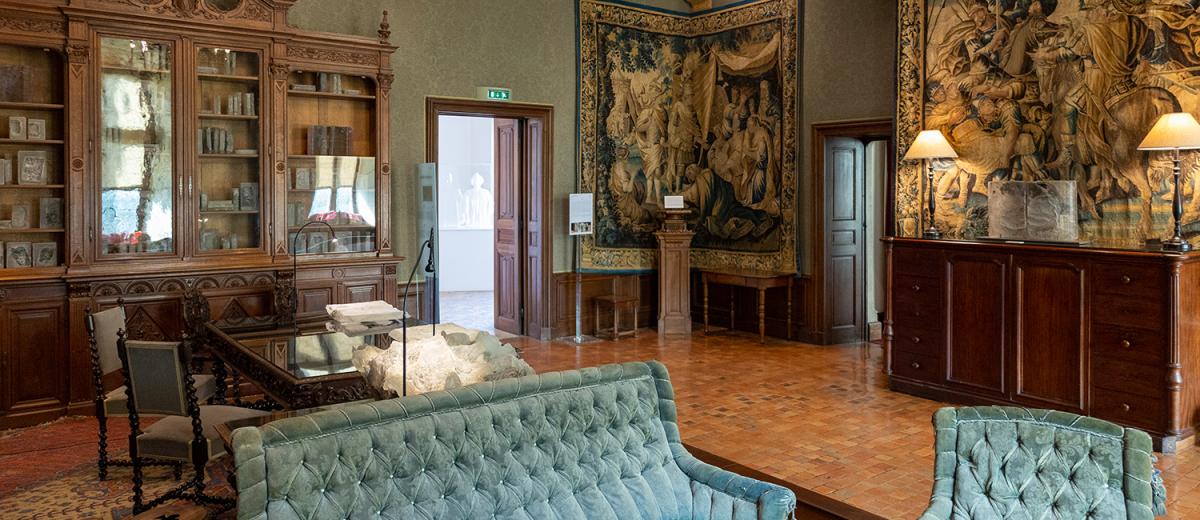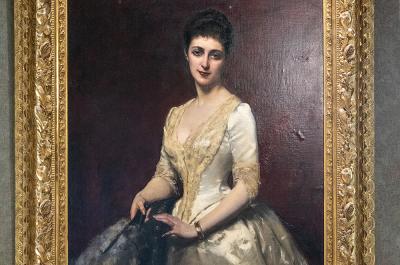The Library

This room was renamed by the Prince de Broglie the "Salon d’Automne" (the Autumn Room). Little is left of the decoration of the time as most of it was destroyed in a fire in June 1957.
Written and pictorial archives show that all of the walls were covered in yellow fabric with large floral motifs, as well as shelving, and it had a fireplace with pilasters and columns, a low-relief sculpture of a man in armour and sculpted pediment.
These days, the room has furniture dating from the time of Napoleon the Third, including a very rare piece of furniture known as an "indiscreet". It's a helicoidal armchair, which allowed three women to sit together and talk. On the walls, hang two tapestries depicting two episodes in the life of Alexander the Great, woven in the 17th century at the Royal manufacture in Aubusson, from sketches by the First Painter of King Louis the Fourteenth Charles Lebrun: The Submission of the family of Darius and The Encounter between Porus and Alexander.
The Portrait of Princess Henri-Amédée de Broglie
Through the FRECC (Regional Fund for the Enrichment of Chaumont’s Collections), in November 2017 the Domain of Chaumont was able to acquire, from a private collector, an artwork of significance for its collections in heritage terms. It is a portrait of princess Henri-Amédée de Broglie holding a fan, aged 24, painted in 1881 by Charles Émile Auguste Durand known as Carolus-Duran.
Princess de Broglie, portrayed against a deep red velvet background, is wearing a white silk satin gown richly embroidered in beige lace around the sleeves and the V neckline, all the way down to the waist. On her left wrist she wears a golden bracelet and her left-hand rests atop the back of a chair. Her right elbow also rests on the chair back, and in her right hand she holds an ostrich feather fan whose colours echo those of her gown.
Musician guests at Chaumont
The Princess de Broglie often invited musicians and artists to the Château who formed a small troupe-with-orchestra. She played the harp very well and her daughter, Princess Marguerite de Broglie, a talented painter and a keen musician, brought along famous virtuosos such as Boskoff, Francis Planté, Poulenc and Charles Le Bargy. Le Bargy had fond memories of his visits to the Château: "Ah, Chaumont! What splendour! I recall playing there for King Edward the Seventh of England and for King Don Carlos of Portugal. The Princess de Broglie had us brought down by special train from Paris, with the whole Comédie Française, the Opera ballet, the famous Tsigane, Boldi, and his orchestra from Chez Maxim’s."


